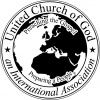What Does It Mean That Jesus Is Our High Priest?
Downloads
What Does It Mean That Jesus Is Our High Priest?

As God worked with ancient Israel, He instituted a system of priests through the family line of Levi (Deuteronomy 21:5). The Levitical priesthood had the duties of transporting the tabernacle (the tent where God's Spirit would appear, and where worship took place), setting it up and maintaining it, carrying out the daily sacrifices, and as with most vocations, other duties as assigned. They served starting at age 30 and retired at 50 (Numbers 4:23). Once the temple was built and worship began there, instead of at the tabernacle, the priesthood took on new roles serving, but by and large, the duties remained similar and the requirements remained the same. They served as intercessors between the people and God, made necessary judgments, and cared for the temple and its grounds.
Of those priests, there was one that was chosen as the High Priest. During Israel’s time in the wilderness, it was Aaron. When Aaron died that mantle passed to his son Eleazar, then on to Phinehas, and the line continued. The High Priest had oversight over the tabernacle or temple (Numbers 4:16) and had a higher degree of expectations and sanctification as a function of his duties (Leviticus 21:10-15).
He also served God and his people in a special way. Once a year on the Day of Atonement, the High Priest entered into the Most Holy Place within the sanctuary, coming before the "Mercy Seat" (the name of the spot that represented God's throne in Heaven, where His very presence through His Spirit was). He brought the blood of a bull and a goat as a sin offering for the people of Israel, and offered it to God on their behalf for the covering of their sins (Leviticus 16). During the remainder of the year, the High Priest was prohibited from going behind the veil which separated the people from God’s presence.
Christ was physically descended from the tribe of Judah, not of Levi—he was physically ineligible to become High Priest. But spiritually as the mediator of the New Covenant, he was the first in a new line of the priesthood of the order of Melchizedek (Hebrews 7; read more about Melchizedek here). When Jesus Christ died, the veil of the temple was torn in two (Matthew 27:51). The piece of heavy fabric that separated God’s presence from His people had been torn asunder, symbolizing that atonement for our sins had been made once and for all by the blood of Jesus Christ (Hebrews 10:10). No longer would it be necessary to bring the blood of bulls and goats to the Mercy Seat. When we commemorate the Day of Atonement today, we reflect on and commemorate Christ’s sacrifice on our behalf, which made it capable for us to come to God in reconciliation.
The writer of Hebrews understood how Christ and His role as High Priest fit into the plan of God. He recognized that the things which they had rehearsed for years on the Day of Atonement was pointing forward to the sacrifice of Christ. As such the book of Hebrews was originally intended to bring a Hebrew audience to that same understanding.
In the book of Hebrews, he writes that only Jesus' blood—not the blood of bulls and goats—made true and lasting atonement with the Father possible (Hebrews 9; Hebrews 10:4). As our High Priest, Jesus Christ entered the Most Holy Place with His own blood, making intercession on our behalf (Hebrews 10:10). The veil was torn, symbolizing the end of separation from God, and our continuous access to God the Father in prayer.
Today, Christ continues to be our High Priest, interceding on our behalf at the right hand of God in heaven as our mediator (Romans 8:34; Hebrews 10:12). He is the High Priest of the New Covenant, a better covenant than the one made with Israel (Hebrews 8)—the High Priest of His Church, which is the spiritual body of believers whom God has called out.
Christ is our High Priest, and because of everything He did on our behalf, we can as it states in Hebrews 4:16, “come boldly before the throne of grace, that we may obtain mercy, and find grace to help in time of need.”
Read our Bible study aid The New Covenant and this chapter in particular to gain a more comprehensive understanding of the New Covenant and our High Priest, Jesus Christ.
